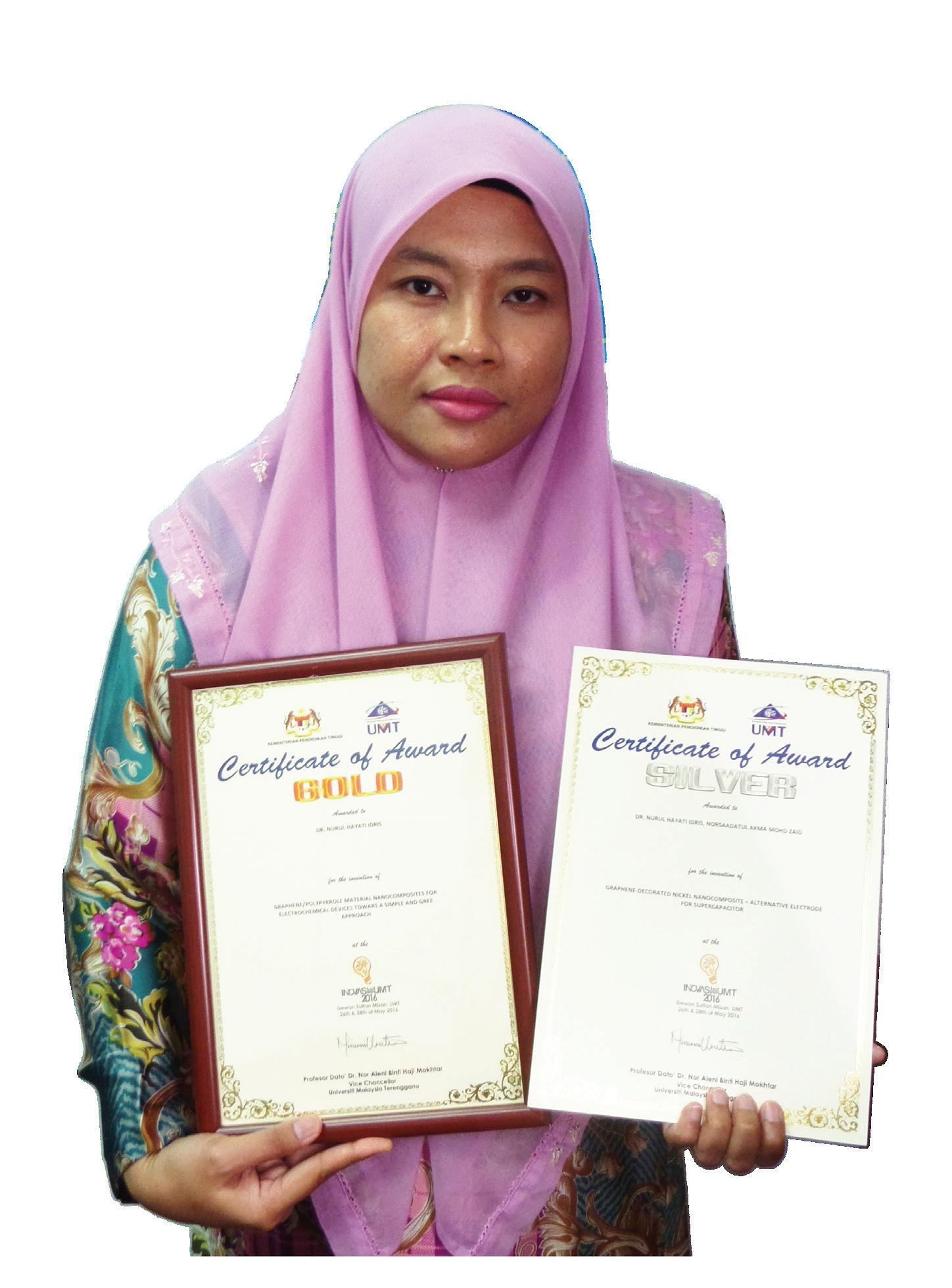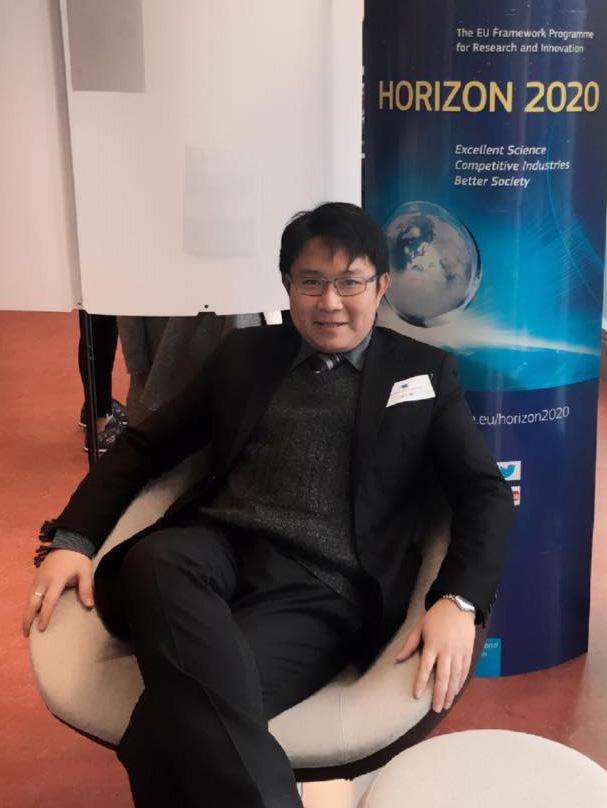
7 minute read
RESEARCH PAPER All Charged Up On Supercapacitor Research

All Charged Up On Supercapacitor Research
Advertisement
Imagine an electric vehicle (EV) that can be fully charged in about the same time as a car being refueled with a full tank of petrol. That would pave the way for the phasing out of the fossil-fuel-powered vehicles that we have now as the long downtime for battery recharging is one of the main issues preventing the advancement of EVs.
As the world moves towards renewable energy, the methods of storing electrical energy become a muchresearched area as scientists search for better ways to power up EVs and other environmentally-friendly technologies.
Although the lithium-ion battery is currently the backbone of electrical energy storage, supercapacitors has long been touted as its likely successor due to the latter’s large power density, excellent cyclability and fast charging time. The importance of research in supercapacitors and their components had driven Universiti Malaysia Terengganu (UMT) School of Ocean Engineering senior lecturer Dr. Nurul Hayati Idris to focus her research on graphene, a potential supercapacitor material that could secure its place as the holy grail of electrical energy storage.
“Graphene became a hot topic in the circle of supercapacitor researchers around the world after it was discovered by two scientists in the United Kingdom in 2007. Graphene rose to greater prominence after the two scientists who discovered it were awarded the Nobel Prize in 2010,” she said.
She said graphene is derived from graphite, which has been the preferred material for supercapacitors.
“Graphite, which is actually formed by graphene layers stacked together by a weak Van Der Waal bond is a good supercapacitor material but it still has
limitations. When unstacked, graphene nanosheet is a two-dimensional layered hexagonal lattice of carbon atoms with a large surface area of 2,630 square metre per gram, excellent for ion interpolation. It is a potential supercapacitor material as this electrical double-layer capacitor (EDLC) has a high conductivity and good mechanical properties,” she explains.
However, Dr. Nurul Hayati said more research still need to be done on graphene to further enhance its capabilities and overcome its weaknesses.
“Graphene is carbonaceous, it has a high power density and but relatively low capacitance; its corresponding capacitance has a common value of less than 40 μ Farad per square centimetre. This is an immense weakness that needs to be addressed,” she said.
Her research involves the combination of graphene with nickel as the latter can impart high specific capacitance.
“Nickel is a pseudocapacitor. Many researchers in this field had experimented with the combination of graphene and other pseudocapacitors but I chose nickel as it is cheap and widely available,” she said.
She said graphene also has the tendency to restack, forming the Van Der Waal bond to become graphite again.
“Here is where nickel comes into play as it will help prevent the graphene nanosheets from restacking,” she said. Dr Nurul Hayati was proven right when the test results showed v e r y p r o m i s i n g improvements.
“When we tested the nickeld e c o r a t e d g r a p h e n e n a n o s h e e t s , there was almost a 50 percent jump in its capacitance. A graphene-only supercapacitor displayed a capacitance of 140 Farads per gram while the reading of the nickeldecorated sample showed 270 Farads,” she said.
And that was not all. It turned out that the nickel, being a metal, had also helped reduced the resistance in the graphene nanosheets.
“The graphene-only sample has a charge-transfer resistance of 10 ohms while the reading for the one with nickel is only 6 ohms,” she said, highlighting the 40 percent reduction in resistance.
“The test results show that the EDLC and pseudo capacitor hybrid was successful in maximizing the graphene performance,” she said.
She said the nickel inclusion increased the surface area of graphene, thus increasing capacitance by maximizing the area for ion intercalation. Furthermore, with nickel being metal, its conductive property increased performance by minimising resistance.
Dr. Nurul Hayati said the material for her research project was made in-house by ballmilling a mixture of graphite and nickel.
“Ball-milling is an effective and cheap way of getting the nickel decorated graphene that we needed for the experiment. We mill the mixture for 20 hours and we got more than nine grams of material with an input of 10 gram. This means that the process have very small material loss,” she said, adding that she used chemically-inert zirconia balls for the milling process to prevent the possibility of material from the balls contaminating the sample.

“Most researchers employ chemical m e t h o d s t o p r o d u c e t h e graphene for their experiments but it would require the end product to be washed to let out the solvents used

RESEARCH PA P E R
The supercapacitor technology is full of potentials and I intend to pursue it further and contribute to its development. In the end, the community, the nation and humanity at large will reap the benefits when the technology became fully matured,” she said. Dr. Nurul Hayati
during the process. This could give rise to significant material loss, a problem that we did not face as only a small fraction of material had stuck to the ball mill,” she said.
Her effort had won the silver medal in last year’s UMT Innovation Contest. She had won a gold medal at the national level contest previously for another research, also on graphene.
However, she is not one to dwell on the past as she has better plans for the future.
“We had just literally scratch the surface as far as supercapacitor research is concerned. After researching the potentials of nickel-decorated graphene, we are now going to test it in a real application, that is, in a real supercapacitor,” she said.
Dr. Nurul Hayati said the race to find a really good supercapacitor material is still on.
“A supercapacitor material that can at least match the performance of the lithium battery has yet to be found. Most supercapacitors in the market now use graphite as electrodes as graphene is still being researched. This is why commercially available supercapacitors are too expensive; a watch-battery-sized supercapacitor is sold at around USD30,” she said.
She said she will continue her research on graphene because she is still far from her goal of testing graphenebased supercapacitors in an EV.
“The fast charging, high capacity properties of a really good supercapacitor will be very useful for EVs,” she said.
She said researchers around the world, including in UMT are now testing the viability of using supercapacitors in tandem with batteries to store electrical energy in hybrid vehicles.
“In hybrid cars, the petrol engine is supposed to run only if the vehicle goes faster than a threshold limit, say 80 kilometres per hour. However, if the battery that is supposed to power the vehicle has insufficient charge to run the vehicle, the engine will still be powering the car even at low speed,” she said.
“The electric motor that runs the car will charge the battery during braking but this is insufficient because the battery takes a long time to charge. In contrast, a supercapacitor can be fully charged in just a few minutes so it is more likely to be fully charged and able to take over when the car runs at peak acceleration,” she explains.
She said it is her dream to test a supercapacitor/battery hyrid system in a car.
“There is still a long way to go. Maybe my dream can be realized in about 15 years,” she said.
Aside from powering vehicles, she said supercapacitors can be very useful in other applications.
“During the devastating floods in Kelantan a few years ago, one of the problems faced by rescuers was how to recharge their walkie talkies as the powerlines were down. If supercapacitors were available, perhaps they could be used to quickly harvest solar energy and then charge the walkie talkies’ battery. Better still, with sufficient technology maybe the batteries could be replaced with supercapacitors,” she said.
Closer to home, she said a similar technology could help fishermen to charge their handphones while at sea.







